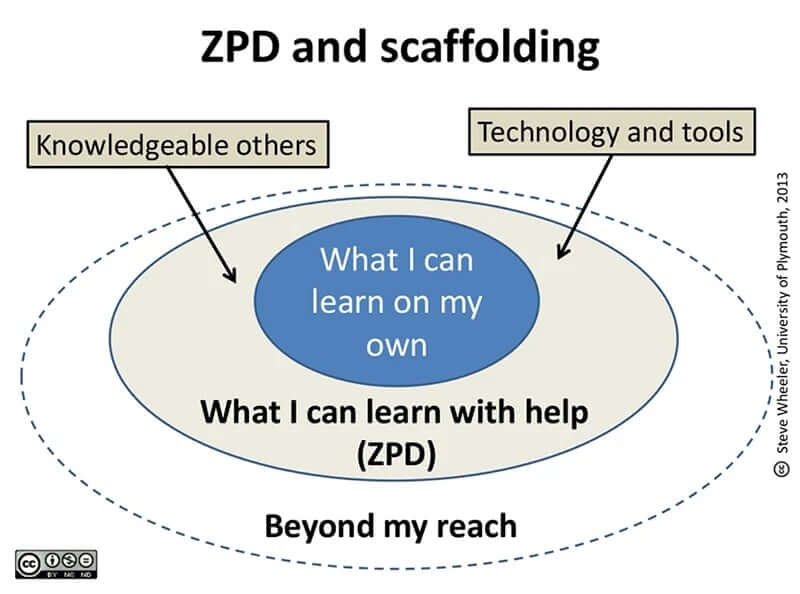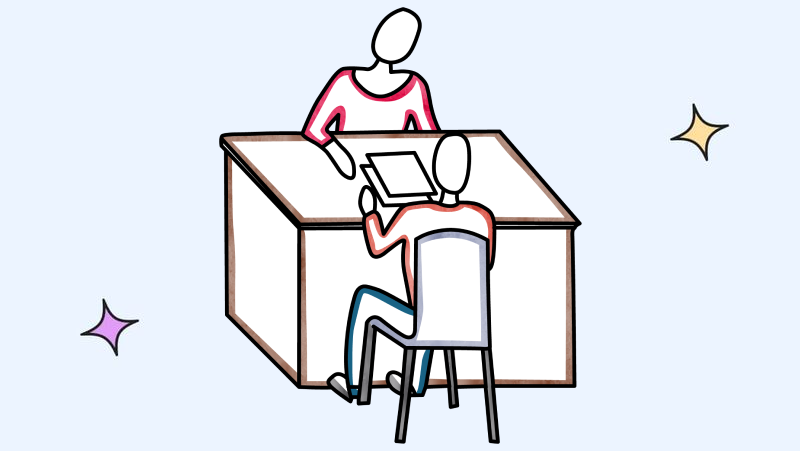Vygotsky’s Theory of Cognitive Development
In modern instructional design, Vygotsky's Theory of Cognitive Development offers a foundational lens for understanding how learning is socially mediated.

Rethinking the Roots of Learning
Modern learning design often emphasizes autonomy and self-direction. But what if the most powerful learning happens not in isolation, but in dialogue? That's the core idea behind Vygotsky's Theory of Cognitive Development, a framework that places social interaction at the heart of intellectual growth.
In modern instructional design, Vygotsky's Theory of Cognitive Development offers a foundational lens for understanding how learning is socially mediated.
Unlike Piaget, who saw development as unfolding in universal stages, Lev Vygotsky argued that cognitive development is deeply embedded in cultural tools, language, and collaborative experiences. His theory helps educators and instructional designers rethink how skills are built, not as solitary gains, but as co-constructed competencies.
Understanding this theory allows us to design instruction that doesn't just deliver content but builds cognitive capacity through scaffolding, guided interaction, and learner-centered support. It complements structured models like Gagné's Nine Events of Instruction and design principles like Mayer's Multimedia Learning, offering a social dimension to otherwise content-driven experiences.
Key Principles
1. Social Interaction is the Engine of Development
Vygotsky believed that learning precedes development. It is through engagement with others (peers, mentors, teachers) that cognitive structures form and evolve.
In instructional design, this implies that well-structured collaboration, group tasks, and facilitated discussions are not optional enhancements but essential components of development.
Real-world application: In an LMS-based course on project management, learners work in pairs to analyze a client brief. One learner models risk assessment while the other navigates budgeting. Through discussion, both internalize new planning strategies.
2. The Zone of Proximal Development (ZPD)
Arguably the most influential component of Vygotsky’s Theory of Cognitive Development, the ZPD is the gap between what a learner can do independently and what they can achieve with appropriate guidance.
Learning is most effective when instruction is targeted within this zone, stretching the learner without overwhelming them.

Instructional design in action: In a coding bootcamp, beginners first complete drag-and-drop pseudocode exercises with hints and tutorials. As their confidence builds, support is gradually removed. Learners then solve similar problems independently, demonstrating ZPD closure.
This approach also aligns with Gagné's stages of "Provide Guidance," "Elicit Performance," and "Provide Feedback."
3. Scaffolding: Temporary Support for Long-Term Learning
Scaffolding refers to the strategic, temporary support offered to learners to help them perform tasks they cannot yet do on their own. As competency increases, this support is removed, leading to independent mastery.
Example: In a business writing module, learners first receive sentence starters, formatting templates, and feedback rubrics. By the end of the unit, they write independently using professional models. Scaffolding bridges novice behavior with expert performance.
4. The Role of the More Knowledgeable Other (MKO)
The MKO is a person or tool that holds more knowledge than the learner about a specific topic. This might be a teacher, peer, parent, or even a well-designed digital assistant.
Designers must embed MKO-like features into digital environments: adaptive hints, contextual feedback, intelligent tutoring systems.
Practical implementation: In an online math platform, when learners struggle with ratios, an AI coach offers simplified problems and real-time suggestions, acting as an MKO until mastery is achieved.
Designing support systems that mimic a real or virtual MKO is one of the most practical applications of Vygotsky's Theory of Cognitive Development in digital learning environments.
5. Language as a Tool for Thinking
Vygotsky viewed language as both a cultural tool and a cognitive scaffold. Through social dialogue, learners develop internal speech, mental narration that guides behavior and problem-solving.
Instruction that encourages learners to talk through processes, reflect aloud, or narrate steps supports metacognitive development.
Example: In a virtual science lab, learners are prompted to “Think aloud” as they balance chemical equations. The activity fosters inner speech that later becomes automatic problem-solving behavior.
"What a child can do in cooperation today, they can do alone tomorrow" — Lev Vygotsky
Real-World Educational Scenarios
Collaborative Learning in LMS Design
Rather than passive content consumption, a learning management system can foster collaborative learning through forums, peer review, and shared reflection spaces. Learners working on a marketing case study provide feedback to each other using a structured rubric. Through peer interaction, they refine their analysis and expand their understanding of campaign strategy.
Virtual MKO Through Guided Feedback
A professional development course in cybersecurity simulates real-time attacks. When a learner chooses an incorrect response, the system pauses and provides a video explanation from a domain expert. This layered feedback simulates the MKO, providing just-in-time support without derailing the experience.
Voice-Enabled Scaffolding
In a language learning app, learners repeat sentences after a native speaker. As their pronunciation improves, they are encouraged to construct their own phrases. This gradual reduction in support illustrates how scaffolding can be embedded into voice interaction, helping learners transition from mimicry to fluency.
A Supporting Example (Not the Focus)
Think of Amina, a 10-year-old learning to solve word problems. At first, her teacher asks leading questions: "What do we know here? What are we trying to find?" Over several weeks, Amina starts asking these questions herself. What began as guided support transitions into internal dialogue, Vygotsky's theory at work.
This isn't the center of our understanding, but it illustrates how social input becomes internal cognition, an essential dynamic in development.
Vygotsky's framework doesn't just explain how learners develop, it challenges us to design learning environments that respond to those developmental needs. Whether in classrooms, digital platforms, or blended settings, the application of his principles means we must pay close attention to the structure of support, the timing of feedback, and the opportunities for guided interaction. These aren't bonus feature, they are the core mechanics of meaningful learning. When we position learners within their Zone of Proximal Development and thoughtfully guide them forward, we don't just transfer knowledge, we build capacity.
Vygotsky's Theory of Cognitive Development reframes how we view learning, not as a solo climb, but as a guided ascent with social footholds. By designing instruction that targets the Zone of Proximal Development, incorporates scaffolding, and simulates the presence of more knowledgeable others, we don't just deliver content, we cultivate capability.
For instructional designers, this theory isn't abstract, it's strategic. It helps us ask: Where is the learner now, and what kind of interaction will move them forward?
Implementing Vygotsky's Theory of Cognitive Development means crafting environments where learners evolve through carefully structured interaction and support.
Reflection Prompts
- In your design work, how do you simulate the role of the MKO?
- What tools or formats have you used to scaffold complex concepts?
- How can ZPD thinking reshape your assessments and content pacing?


